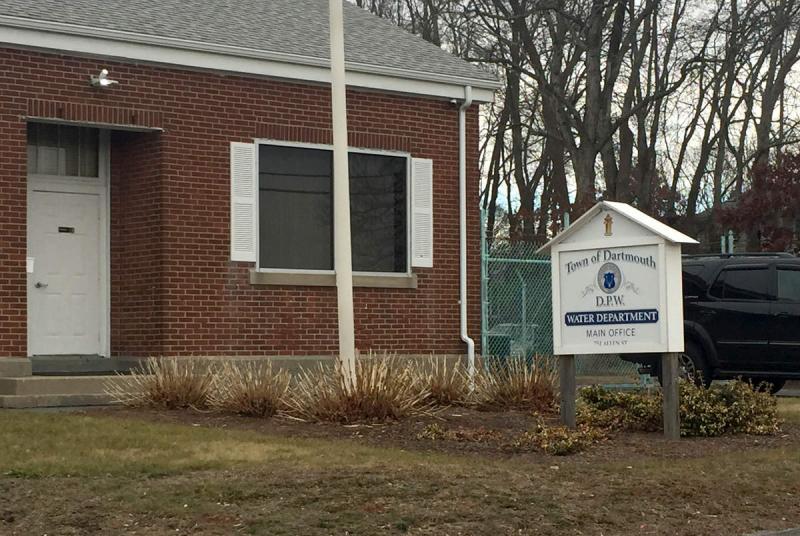Disinfectant switch could solve water issues
The Department of Public Works is investigating ways to improve water quality after a recent violation of drinking water standards.
According to DPW Director David Hickox, the most recent violation this month concerns the detection of trihalomethanes (TTHMs) greater than the maximum permissible amount in town water. The town began testing its water supply for the chemicals – byproducts of chlorine disinfectant use – due to new regulations put in place in 2012.
“The water is safe to drink,” Hickox said, adding that this is a problem not limited to just Dartmouth.
Since testing began, a total of five violations have been detected due to TTHMs. Three occurred at a testing site on Reed Road, while two – including the most recent violation on September 5 – occurred at a testing site on Allen Street.
A letter sent to water customers stated the average results of four quarters worth of testing revealed levels of 84.68 parts per billion, above the 80 parts per billion limit set by the Environmental Protection Agency. There is no emergency or imminent risk to health, according to the letter, and the water is still safe to drink.
In the previous violation, levels were listed as 81.18 parts per billion.
The samples collected for each test are at the outer extremities of the water system, where older water is likely to collect. Chlorine used to disinfect the town’s water supply can react with natural organic matter, which produces the trihalomethanes.
When the first violation on Reed Road came to light in 2013, the department joined two pipes on Reed Road to improve water flow, which solved the issue for that area. The last violation on the Reed Road segment was in 2015.
“We did a small loop on Allen Street too, but unfortunately it did not totally resolve the issue,” Hickox said.
Instead, Hickox said the department is currently searching for a different way to solve the issue with $1.5 million in funding approved at the June Town Meeting. Hickox said it’s likely the solution will be to switch disinfectants to chloramines.
“We know chloramine doesn’t form disinfectant byproducts the way chlorine does,” Hickox said.
Hickox said it is a common change. New Bedford already changed its water supply disinfectant to chloramine.
Mixers are another option that could be used. They work by blending into water stored in water tanks to prevent it from sitting for too long. Two water tanks currently have mixers installed.
The department is finishing up collecting data this month, and Hickox hopes the final recommendation will be ready to send in to the state Department of Environmental Protection in November. Work could be completed by the summer or fall of 2019.














